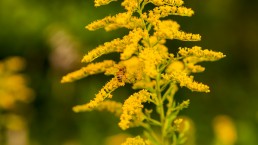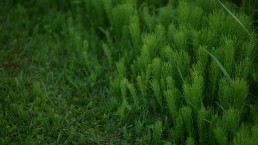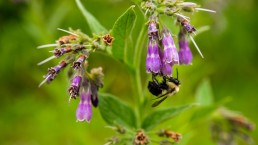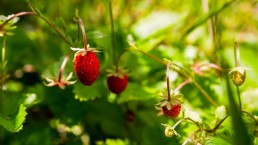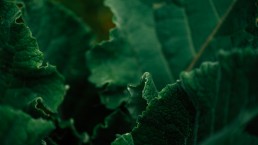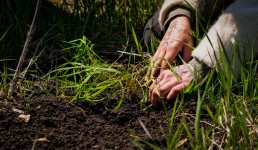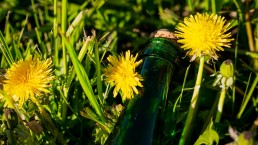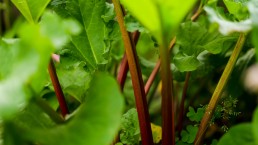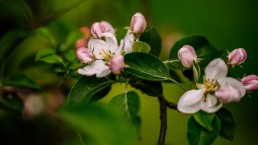Goldenrod
Goldenrod
AKA: Solidago
Uses
- Used for kidney stones, urinary tract infections, bladder inflammation, digestive problems, colds and flu, sore throat, congestion, laryngitis, fatigue and surprisingly hay fever and allergies.
- Indigenous peoples boiled leaves and used them topically as an antiseptic and astringent for wound healing and relief from eczema, arthritis and rheumatism
A Little About Goldenrod
- This beautiful herb grows in plant colonies, some are 100 years old! Older, central plants may eventually die back, creating a ring, but usually colonies are too dense for other plants to invade. Surprisingly, Goldenrod has no allergens. It is not goldenrod that brings on fits of sneezing in the fall, but the inconspicuous ragweed that grows in the same conditions, the same area, and at the same time. The heavy sticky pollen of goldenrod is not wind-borne, because many different insects take over the task of its pollination.
Historically
- After the Boston Tea Party, when American colonists had dumped all the tea into Boston Harbor, they discovered they had lost their favorite beverage. Not to be deterred for very long, they found that an excellent tea could be made from the leaves of the North American goldenrod, and they named it Liberty Tea.
- The stiff stem of the plant was historically used as a divining rod, but that was only successful if used by the right person.
- Another belief is whenever golden rod grows near a house, its occupants will have good fortune. Still another holds that wherever goldenrod grows, there can be found buried treasure.
- There is also a legend about two little girls that were very close friends; one was golden blonde and the other was dark haired with beautiful blue eyes. They were afraid that when they grew up they might be parted from each other so they didn’t want to grow up. To solve their problem, the two little girls set out one day to visit the good witch who lived across the field far away. They came to the good witch after a long day of travel and told her of their wish to always be together. The little girls were never seen again, but whenever you see the golden yellow bloom of the goldenrod you will be sure to find the sweet blue aster always beside her.
Herbal Actions: Astringents
Herbal Actions
What is a “herbal action”?
When we speak about the action(s) of a certain plant, we are referring to one or more effects a plant can have on our body. Often these actions are explained in two or three words; however, herbal actions are so much more than that! Since plants are wonderful complex beings, they also have several actions. Most herbs can compliment their action(s) in combination with another herb, basically showing off their best side with the support of a “good friend”. Sometimes they work great on their own, but most of the times, they excel with a good buddy on their side. Think- Teamwork!
Astringents
The Astringent feeling is something you probably can all relate with. If you are unsure, taking a bite out of any unripe fruit or vegetable will quickly remind you what it feels like. Rather swiftly, your mouth will dry out completely and leave you with a very puckering sensation. Another great example is that of black tea, especially one that has been steeping for too long. Why not make yourself a cup and consciously experience the sensation of astringent herbs? Take a sip and leave it in your mouth for about a minute or so. Can you feel how it has affected the mucosal lining, how the tissue has tightened and a very mild analgesic feel is overcoming the inside of your mouth? This is astringency.
Tannins
This dryness you experienced is the result of tannins, found in astringent plants. Tannins are a subcategory of phenolic compounds. Back in the day, tanning leather with astringent plants was very common practice. Animal skins were often preserved with Oak bark, Walnut shells and other specific tree barks. Nowadays, leather is mostly tanned with mineral salts and other inorganic substances. However, the term “tannin” comes from its traditional usage for tanning leather.
I always like to find out “why” a certain plant is high in a certain constituent.
Plants high in tannins (often found in the bark, roots and also leaves) protect themselves internally from different kinds of funguses as well as protection from mold; they are helpful for the plant to prevent water, bacteria or other pests to enter. Externally they serve as protection from loss of fluid from the plant itself. Aren’t plants amazing??
How Astringents Work
Traditionally, astringents are used to treat tissue states.
Herbalist David Hoffmann writes that tannins have a lot of benefits, including:
- Reducing irritation on the surface of tissues through a sort of numbing action
- Reducing surface inflammation
- Creating a barrier against infection, which is of great help for wounds and burns
Astringency also dries up extra moisture in the body. This can be helpful for a cold, wet gut or diarrhea.
Where the energetics are mostly plant specific, it can be said that astringents are cool and dry (with exceptions of course). Therefore, astringents are best suited for damp conditions.
Astringents and the Body
So, let’s get into how astringent herbs can be useful for our body.
By tightening the upper layer of the skin, tannins make it hard for germs to enter the body via the skin. In case of a bleeding wound, astringents can constrict blood vessels to help staunch it. In this case, we call the action styptic. Due to the astringent and mildly analgesic actions, astringents work great to soothe a sunburn or other mild burn.
Examples of Some Astringent Herbs
- Achillea millefolium (Yarrow), Arnica montana (Arnica) as well as Quercus spp. (Oak) are all great astringents for the skin.
- Rubus fructicosus (Blackberry) root seems to be well known for its high amounts of tannins and is a strong remedy for both diarrhea and dysentery.
Wonderful herbs for the digestive tract include:
- Rubus fructicosus (Blackberry)
- Filipendulum ulmaria (Meadowsweet)
- Salvia officinalis (Sage)
Astringent herbs are frequently used to address urinary incontinence, bedwetting, and are an important part of urinary tract infection treatments.
Specific herbs for the urinary tract include:
- Equisetum arvense (Horsetail),
- Achiella millefolium (Yarrow)
- Cyanococcus (Blueberry leaf).
If you have experienced pregnancy, chances are you drank lots and lots of Rubus ideaus (Raspberry leaf) tea. This nutritive astringent tonic is great to strengthen the uterus and get it in “top form” for delivery – and back into form, after delivery. Rubus ideaus is a wonderful herb for the reproductive system.
I hope this post gave you a little insight on Astringents and how they can interact with our body. This topic is covered much more in depth in the herbal course, which is currently developed and coming soon by our group of wonderful herbalists.
Resources:
Besides my own words, this write up features information from the following resources:
– Ursel Buehring Praxis- Lehrbuch Heilpflanzenkunde – Grundlagen – Anwendung – Therapie. 4 ueberarbeitete Auflage. Karl F. Haug Verlag in MVS Medizinverlage Stuttgart GmbH & Co. KG’ 70469 Stuttgart, Germany. 2014. (Published in German language)
– Jim McDonald – Foundational Herbcraft – www.herbcradft.org – collected writings from www.PlantHealkerMagazine.com.
– David Hoffmann – Medicinal Herbalism: The science and practice of herbal medicine. Healing Art Press, Rochester, Vermont 05767. 2003.
– Abrah Arneson – The Herbal Apprentice: Plant Medicine and the Human Being – Green Heart Press. 2014.
– Matthew Wood – The practice of Traditional Western Herbalism – Basic Doctrine, Energetics and Classification – North Atlantic Books, Berkley, California. 2004.
– Lisa Ganora – Herbal Constitiuents: Foundations of Phytochemistry – Herbalchem Press, Louisville, Colorado. 2009
A Herbal Apprentice's Journey: Summer
July, 2021.
No matter your background, education, or practice, as a herbalist you are walking a path that was once walked by your ancestors. Our ancestral lineage includes our human ancestors, but also includes the community of plants, rocks, wind, water and soil that all took part in the creation of you. To be an herbalist - or simply, someone who connects with plants - you are participating in a spectacular woven tapestry that has been in creation since time immemorial.
Our deep relationship with Earth and the universe is our first and our last. Our relationship with the universe is the only relationship we ever truly participate in... Each interaction we have is simply a reflection of our own inner becoming; with our friends and relatives, as well as the plants and sky are all communicating as one. To be in relationship with the Earth and with plants, we are discovering again and again new layers of our own selves. In the journey of herbalism, there is a choice to venture deeply into one’s own mystery.
It is for this reason, and of course many others, that I pursued an apprenticeship. I wrote in my previous blog post that I split my time between two placements, and one of which is a plant sanctuary for at-risk plants called Kina Gegoo. For decades, Penelope Beaudrow has been stewardess to many acres of rewilding land, including a plant sanctuary for endangered plants. Penelope is one of my mentors and friends. The work that she has selflessly dedicated herself to is sacred.
To build a relationship, first we must listen. This first step is essential, especially in non-verbal conversation. The language of plants. The language of the universe. Most times, a conversation begins with an introduction, a check in, and a sharing of intention. Seems familiar, yes? Most at-risk plants become at risk due to habitat loss and overharvesting. Humans are most certainly a fault, with agendas that often hold space only to exploit land. If we take some time to listen, it won’t take long for the plant to tell you that. It is our responsibility to do whatever we can to maintain the life of these plants. We have a lot of power, and a lot of hope for regaining plant communities that are at risk of being lost.
“I didn’t participate in those atrocities” (devastating land for extraction of “natural “resources”, unsustainable agriculture practices, slavery, indigenous genocide... the list goes on and on.) Aha. This is a refrain used by many to weakly deflect their responsibility. I want to make this next thought very clear: there is a mirrored relationship of at-risk plants and racism, and how there is a clear and parallel path to addressing them. This comparison is by no means an equivalency - I am using endangered plants as a metaphor, and in doing so I hope to encourage you to explore the relationships that herbalism has with politics... but that’s for another blog post, perhaps. I’ll simply plant this seed of thought for now.
Let these plants be our teachers. Let them teach us what it takes to show up for our communities. Whether those communities are human or otherwise. We are creating safe spaces for one another to flourish, based on individual needs. We are listening, trying, failing, continually humbled, and continuing to show up at the table for one another. That is what community care looks like - and that’s exactly what it looks like when you are trying to care for at-risk plants. We are taking responsibility while holding ourselves accountable.
And what is our responsibility, then, when considering endangered plants? Knowing which ones are endangered, knowing how to identify them, choosing not to use them, growing a colony of your own, informing others who may not know. This is the very least we can do as herbalists and plant lovers, and it truly does a lot! On a large scale, you may wish to cultivate your own plant sanctuary. Some people have made it their life work to do so. I’ve been fortunate enough to see and participate in the stewardship of a plant sanctuary, at Kina Gegoo.

Toting buckets of water to ensure everyone has had a good drink. Hauling bales of straw for mulching. Checking in with each newly planted tree. Pruning. Collaborating. Breaking in the heat. Sitting in the grass and connecting about anything and everything that feels relevant... Or not. Planting and transplanting. Kneeling down to say hello. Keeping invasive plants at bay just enough so they don’t completely swallow the land. An exercise in boundaries. “You can stay, buckthorn, but you mustn't take all of this land for yourself. You can stay, but you may not harm these other plants we are trying to cultivate. You can stay, because it’s clear that you wish to, but you will not have total control of this sacred mission.”
There is extensive and inspiring work being done by the United Plant Savers. If you are a plant person, which I am assuming you may be if you’ve found your way to this page, I greatly encourage visiting their website and taking a look at their resources at https://unitedplantsavers.org
I’d like to take this next moment to ask you… What are you doing for your community this month?
Sometimes community work doesn’t look like direct action. Sometimes taking care of yourself is necessary, so you can show up in a better way for your community. Perhaps you are journaling, opening your heart, learning something new, easing your resistance to new things, or putting your hands in the dirt and enjoying the beauty of July sunshine.
Whatever it is that you are doing... thank you. May it benefit all beings.
(Blog photo provided by Penelope!)
Ode’imin: The Heart Berry
“The Heart Berry”
The warm weather is here and it brings a special gift, an abundance of Ode’imin, considered a sacred food to Anishinaabe people. Out on my walk, her little five petaled white flowers are catching my eye and signaling what’s to come… little juicy red berries! Ode’imin (pronounced “O-day-min” in the Ojibway language) means “heart berry” – referring to what we know as the strawberry.
Medicinal Properties
Strawberries are so good for us! They are high in vitamin C, a known antioxidant that boosts the immune system. They are also a source of potassium which lowers blood pressure. Actually, the entire plant that includes the leaves, roots and berries are medicinal. It is a mild astringent and diuretic. A decoction of the leaves and roots may be used for diarrhea or to support kidney function and detox the body. A strong decoction of strawberry leaves may be used to cleanse the skin and heal eczema.
The Art in “Heart”
As an artist, painting Ode’imin brings me joy. The bright red berries just pop in colour on the canvas. This month I had the opportunity to teach teachers! A group of educators completing their AQ (additional qualifications) course in Indigenous ways of knowing joined me in a virtual paint night where we painted together and chatted about Anishinaabe art and strawberry teachings.
With my cup of strawberry leaf tea in one hand and paint brush in the other, I shared that in our culture strawberries are included in many of our ceremonies. During ceremony, we sit in a circle and a wooden bowl full of berries is passed around that has been prepared by our women. We are instructed to eat the entire berry including the little green leaves that sit on top. Although we commonly remove this part of the berry, we are told by our elder that this part is not only full of medicine but it is also part of the spirit of the plant.
I also shared that Ode’imin is considered a women’s medicine in our culture because when a young woman receives her first moon time or cycle, it was traditional to do a berry fast. During this time the young women would fast from eating berries for an entire year. During that year she would spend time receiving many teachings from her mother, aunties and grandmothers. The young woman would end her berry fast by gathering berries and holding a ceremony and feast with her community. This was a beautiful time for our young women.
Our evening painting together was not only creative and informative but served everyone’s wellbeing, just as Ode’imin does. Spending time with others even virtually during stressful times is healing and good for the soul. Further, when you are creating with no expectation other than being present, you can relax and let your creativity flow and let the stress disappear.
Blog photos and art provided by Lauri!
Herbal Actions: Bitters
Herbal Actions
What is a “herbal action”?
When we speak about the action(s) of a certain plant, we are referring to one or more effects a plant can have on our body. Often these actions are explained in two or three words; however, herbal actions are so much more than that! Since plants are wonderful complex beings, they also have several actions. Most herbs can compliment their action(s) in combination with another herb, basically showing off their best side with the support of a “good friend”. Sometimes they work great on their own, but most of the times, they excel with a good buddy on their side. Think- Teamwork!
Bitters
In our modern “western” diet, there are only a handful of bitters that have established themselves into restaurants and home kitchens. But then, most of the time, the natural bitter taste of these power foods is reduced by for example sprinkling sugar on a grapefruit or by offering caramelized Brussel sprouts instead of experiencing the real deal. How about a good, bitter coffee? Well, most decide to add a big load of sugar into their dark brew… It almost seems like the naturally occurring bitter taste has become the enemy.
How did we get there? Considering the endless health benefits of bitter plants and foods, why do we try to either mask them or associate them with something bad?
Where our ancestors diet mainly consisted of foraged foods, including lots of bitters, it seems that our modern culture has been taught to like sweets, and dislike bitters. A lot of times when we taste something bitter, we think “Eww! That’s so gross!”. But how about don’t engage in this kind of thinking; how about we go “Wow! That is so POWERFUL!!” Because that is exactly what it is! It is within our power to take away that judgement and re-train our brain. Do you want to join? Let’s try something.
A very wise and experienced herbalist once shared with me how to get my kids to like/ be okay with bitters – lucky for everyone, this technique also works extremely well for grown ups. Yay!! Ready?? Go outside and pick either a dandelion leaf (a mild bitter) or, for a stronger bitter experience, pick some Yarrow or Mugwort. After a nod of gratitude and making sure it does not come from a sprayed lawn or has seen frequent pet-traffic, go ahead and nibble on it. Now try to experience the following:
Phase 1 – Brain response: Our body notices we are chewing on something bitter – Think: WOW!! This has power!
Phase 2 – Contraction: Now it is time to surrender; let your body feel this power and do not fight it or hold the contraction. How does it make you feel?
Phase 3 – Relaxation: After the initial “power-shock”, can you feel how your system is relaxing? Can you feel how your digestive tract is responding; producing a pleasant warming feel in your stomach? Can you feel how your gut-brain connection is not just helping to relax your gut, but also your nervous system?
BITTERS FOR POWER!!
Try this with many different bitter tastes and gradually increase them in your diet. It is also super beneficial to get into the habit of taking bitters just before a meal. But more on that in a little bit…
But, How Bitter is Bitter?
Sometimes you can find a number referring to how bitter a plant is. The number of 1000 for instance describes that 1g of the plant substance can still be experienced as bitter in 1000ml of water.
To get an idea of how bitter some plants are, let me share a few of these bitter numbers:
| Taraxacum officinalis (Dandelion) | 100 |
| Orange Peel | 600 |
| Alchiella millefolium (Yarrow) | 3.000 – 5.000 |
| Artemisia vulgaris (Mugwort) | 10.000 – 20.000 |
| Artemisia absinthium (Wormwood) | 10.000 – 30.000 |
| Gentiana lutea (Gentian) | 10.000 – 30.000 |
A bitter herb like Wormwood tastes so bitter and bile-like, that you cannot simply “wash it down” with a cup of water or something even stronger. Its bitterness is so intense that it can be felt in both your mouth and esophagus for an hour or more afterwards.
How Bitters Work
Bitters can have positive effects on many body systems. In this post I will be focusing on the bitter action on the digestive tract.
As the traditional German saying has it: “Was bitter im Mund, ist dem Magen gesund” – ‘What’s bitter on the tongue is healthy for the stomach’.
Interestingly, bitter taste receptors are not only found in the mouth, but also in the respiratory tract, the liver, the GI-tract, parts of the urogenital tract and other places in the body.
Bitters are intense communicators; when tasted by the tongue, they literally demand attention and provoke a response. The first response happens right away in the mouth as the salivary enzymes get ready for action and salivation increases. Saliva moistens the food and contains enzymes like amylase and lingual lipase. Amylase breaks down starches into sugars for easier absorbed by the body, and lingual lipase kickstarts the break down of fats.
Besides the increase of salivary secretions, messages are sent to the digestive system, signaling the release of the digestive hormone gastrin. Peristalsis, the wavelike motion of the digestive system that stimulates the motility of food along the digestive tract is prompted as well. The digestive tract is encouraged to start properly breaking down food and ensuring optimal absorption of nutrients.
Among Many Other Actions, Bitters:
- Trigger digestive functions
- Stimulate the release of digestive juices
- Increase the flow of bile
- Aid the liver in detoxification work
- Promote intestinal motility
- Are tonifying
- Stimulate appetite
Using Bitters and Preparations
Many herbalists suggest using bitters in form of a tincture. Especially for digestive uses, bitters should really be tasted. A lovely herbalist friend of mine once suggested putting them into a small spray bottle for easier use. This excellent technique makes it really easy and convenient to “quickly” take your bitters.
Otherwise, befriend the powerful bitters and add as many as you can to your regular diet. Start slowly and increase the addition of bitters and reduction of sweetness.
Alternatively, any bitter can also be taken in the form of a tea as gentle decoction. As many bitters also contain aromatic compounds, keep the lid on while decocting and carefully add the accumulated drips on the lid back into your brew. A bitter tea, however, may not be your first choice if you are new to the bitter taste.
Those Who Should Avoid Bitters – Contraindications:
Pregnant women may want to stick to very mild bitters as stronger bitter can potentially cause cramping. Before taking bitters, contact a professional herbalist if you are experiencing heart burn or gastroesophageal reflux disease. They will be able to help you determine if bitters are going to be helpful or possibly worsen the situation. A further contradiction from bitters is if one is suffering from kidney or gallstones. For those with a generally cool/dry constitution, add some warming spices (like ginger or thyme) to counter the generally cooling energetics of bitters.
Examples of Some Bitter Herbs
Lovely bitter herbs to support the digestive tract include;
- Rumex crispus (Yellow dock)
- Gentiana lutea (Gentian)
- Taraxacum officinalis (Dandelion)
- Artemisa vulgaris (Mugwort)
- Matricaria recutita (Chamomile)
I hope this post gave you a little insight on Bitters and how they can interact with our body. This topic is covered much more in depth in the herbal course, which is currently developed and coming soon by our group of wonderful herbalists.
Resources:
Besides my own words, this write up features information from the following resources:
– Ursel Buehring Praxis- Lehrbuch Heilpflanzenkunde – Grundlagen – Anwendung – Therapie. 4 ueberarbeitete Auflage. Karl F. Haug Verlag in MVS Medizinverlage Stuttgart GmbH & Co. KG’ 70469 Stuttgart, Germany. 2014. (Published in German language)
– Jim McDonald – Foundational Herbcraft – www.herbcradft.org – collected writings from www.PlantHealkerMagazine.com.
– David Hoffmann – Medicinal Herbalism: The science and practice of herbal medicine. Healing Art Press, Rochester, Vermont 05767. 2003.
– Lisa Ganora – Understanding Herbal Constituents and Plant Chemistry (2007)
A Herbal Apprentice's Journey: End of Spring
May, 2021.
The paper-like sunshine of morning cradles me these days. I rise early. I sip a coffee. I blink into each day as they grow longer, warmer, with dew and pollen shooting upward like tiny sprites into the air. I put on a pair of boots to step into the barn. It is here where I greet the chickens, goats, barn cats and the reverent elder donkey named Bob. They tell me what they have dreamt of sometimes and the baby goats eagerly demonstrate their skills in climbing and hopping off of things. We laugh into the stillness of the countryside. I like it when the trees join us in the riotous chorus of the morning too. Swaying and chuckling in joy that the sun has returned yet again. Here we are once more... Beginning together. What a blessing.
I walk along the driveway and into the garden beds. A trellis waits patiently for the scarlet runners to reach their arms up and to twist their bodies into its support. Brussel sprouts wave back and forth. Motherwort is quick to reply from her perch alongside catmint in the shade of a cedar bush. The apple tree has just burst into fragrant blossoms. It’s surreal to look at this tree. The breath of it is almost overwhelming. She is so alive! The maiden that is Spring is at her deepest dance of seduction and fertility. Every time I walk outside there is the crescendo of the spring symphony; birds, insects, flowers, even the soil and the waters that have thawed of ice now rejoice. Once stretching into the world slowly waking, and now an unruly ecstasy of movement. The joys of spring.
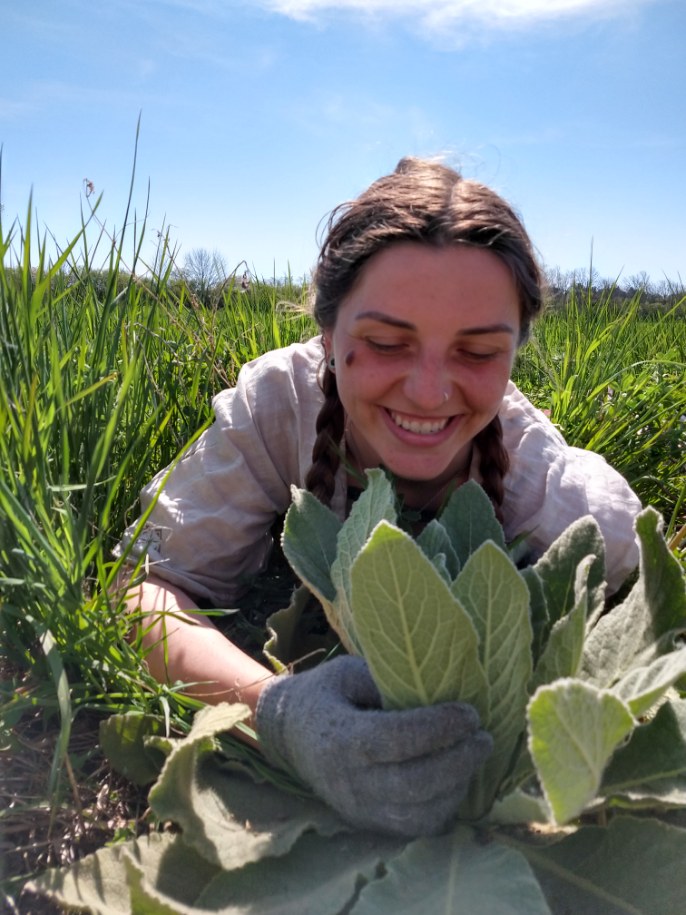
I pack my car with my fiddle and a jar of tea to drive to spend the day with my mentors. During my week, I shift between two gears. One of which is farm work, and the other is in a production lab. I greatly revel in each of these opportunities, which only begin to outline the amount of options while following the plant path. There is no one way of practicing herbalism.
We shovel. We carry. We drive out on 4 wheelers into the forest to identify and rescue at-risk plants. We ask the plants how they would like to live and set out to the fields once the dew dries. We carry baskets to gather dandelion flowers to infuse in oil. I eat dandelion greens, cleavers, chickweed, catmint, nettles with nearly every meal. Spring salts and minerals. Deep nourishment. Dug up roots dry in the sun. We pour tinctures and smile at them with our hands on our hips, remarking their magnificent chlorophyll shine. We rescued Valerian in a spot where it would have otherwise been thrown out. We dug the roots and held them up to each other's faces to inhale the aroma. Deep, dark, somehow like honey. We all sighed at the plants in their transplanted spot of the plant sanctuary. Home at last!
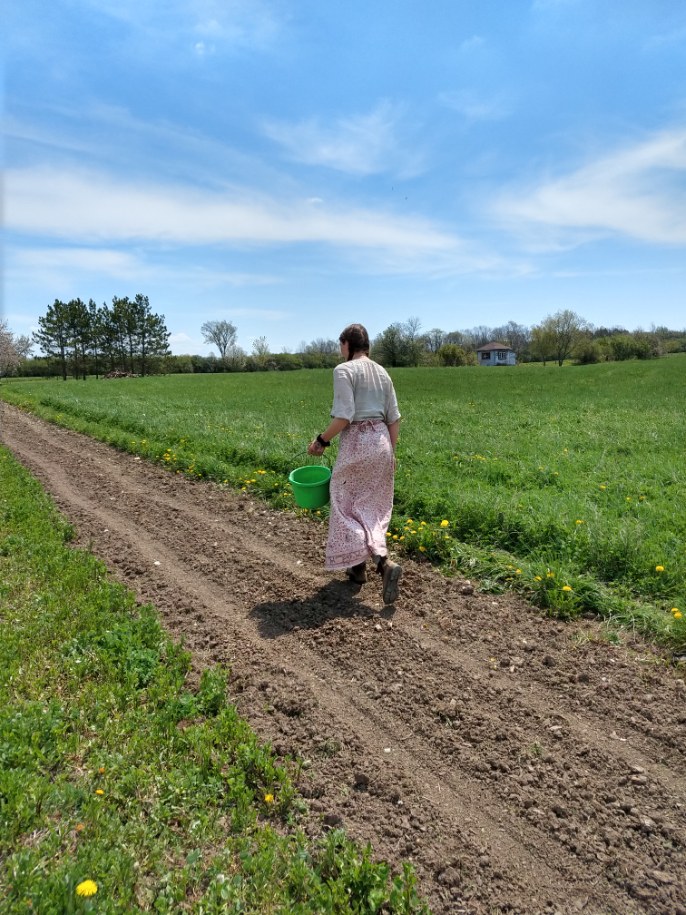
Penny spoke of splitting the seasons into smaller segments; early spring for harvesting roots, late spring for harvesting blossoms and flowers and, of course, everything in between. I’m seeing it now as I recognize that the time for wildcrafting certain plants has come and gone, or that I am anticipating the harvest for another plant weeks away. My interest in plants has become an immersed life of study for me since taking on this apprenticeship. I am encouraged to play with recipes and ask questions! I love walking and putting leaves in my mouth, and talking about plants while working with them. I’m using herbs now more than ever and it truly feels wonderful.
I have learned so much from Penny and Nick in a short amount of time. I came from a foundation of books, home experiments, a good amount of internet research and a community of people that were also into herbalism as a hobby. I had a novice level of knowledge, and I still do. I’m learning. I had said that I believed I was moving beyond the level of, “curious plant enthusiast” and in order to truly know more, it was time to take courses and find mentors. This manifestation has come to me with overflowing gifts. The time to work one-on-one and ask questions from two experienced and devoted herbalists is absolutely priceless! For me, it is the best way to learn. I’m humbled and honoured and endlessly curious.
(Blog photos provided by Penelope!)
Making Herbal Wines
The Art of Herbal Wine
One of the many pleasures of a life in the country is the abundance of free food and the makings of fine drink. Sitting here at my desk, glass of Dandelion wine in hand, the golden glow of the flickering firelight passing through the pale amber nectar drifts my mind back to the Spring and the picking and preparation that led to this magic moment.
Anyone who has ever made their own wine or beer will understand my feelings but nowadays of course, wine nearly always refers to a Chateau produced store bought liquid, made from grapes grown in some exotic far away land. However, until very recently, many other varieties of fruit and even flowers were used by enterprising brewers. Dandelion, Red Clover, Rosemary, Melissa and Rose flowers were all used and all have their own distinctive nose, flavor and effect. Herbs were used for their traditional medicinal values, the wine-making process being merely the method of preservation.
Dandelion for the digestion and liver, cowslip to help with sleep, clover flowers as a tonic and mild euphoriant, these herb wines are very simply made, with minimal amounts of time and equipment and once tried and successfully imbibed, they can become an integral part of your routine and life style. After all, what better way is there to take your medicine than in a glass of fragrant ambrosia? Hoping that I’ve caught your interest, (excuse me while I pour myself an other glass!), perhaps you’d like to give flower wines a try.
Here to help you on your way is my own tried, and very well tested, recipe.
Ingredients:
- Two quarts of Red Clover or Dandelion flower-heads. (Or any other type of edible/medicinal flower. Good ones to try are Calendula, Rose, Violet, Elderflowers, etc. Use your own judgement, the recipe is good for almost any combination of flowers and herbs).
- 1 Kilo (2.5 lbs) of sugar*
- 3 lemons
- 4 ounces un-coated raisins or sultanas
- 1 packet Champagne type wine yeast.
You will also need some equipment, most of which can be found in the kitchen:
- A two or three gallon container, (stainless steel, earthenware, glass or un-chipped enamel)
- A one gallon glass flagon
- fermentation lock*
- campden tablets*
- siphon tube
(These can all be obtained, along with the yeast, quite inexpensively from any home-brewing store).
Notes:
*White sugar (preferably organic) is the best to use, as it allows the full flavours of the herbs and flowers to come through in the wine. Using this recipe the vast majority of the sugar is converted into alcohol by the yeast, giving you a dry wine.
*Campden tablets are a sulphur-based product that is used primarily to sterilize containers for wine, cider and in beer making to kill bacteria and to inhibit the growth of most wild yeast, so improving the taste of your wine. It will also remove both free chlorine and chloramine, from water solutions. It leaves no flavour and thorough rinsing will leave no trace.
*A fermentation lock is used in beer brewing and wine making because it allows the carbon dioxide released during fermentation to escape the fermenting vessel, while not allowing air to enter and thus avoiding spoiling the wine.
Preparation
Pick the flowers on a sunny morning after the dew has dried. They are best picked after several days of full sun but Mother Nature is not always so obliging. Choose only the best flowers and discard all green parts at the base of the flowers. (They will make the wine bitter). Collect two full quarts of flowers for each gallon you wish to make. (This is a good job to give to the kids on a sunny Sunday afternoon. You won’t see them for at least an hour.) It is very important that you collect only from areas that have not been sprayed with garden or agricultural pest sprays. Avoid all roadside flowers as they contain high levels of pollutants.
Sterilization
It is important before starting in the kitchen to ensure that all the implements and containers used are scrupulously clean. Make up a sterilizing solution using the campden tablets, (follow the instructions on the pack) and then thoroughly rinse and clean everything you intend to use. This is the most important operation in home wine making, get it right and your wines turn out perfectly every time, screw-up and your friends will find all sorts of reasons for why they can’t pop over to watch the game, join the barbecue, etc. etc. Anyway, we are digressing. Back to the wine…
Clean Your Herbs
Clean the flowers of insects and dirt and place them into the largest container. Add the juice from the three lemons and the washed raisins or sultanas, and immediately pour over them six pints of boiling water. Stir it all up with a sterilized spoon, cover the container with a sterilized lid and leave to stand for twenty four hours.
Day Two
Next day, lift up the lid and take a peek at the dead flowers and other bits, floating in the water. Hmmm… Give it all a good stir and then strain out the liquid into a clean sterilized container. Rinse out your original container with some sulphite solution and then immediately pour the strained liquid back in. Add the sugar and two pints of boiling water, stirring well so as to dissolve the sugar, and then add the yeast, which has been prepared beforehand as instructed on the package. Stir it again, cover and put it away in a warm spot where the temperature stays around 70-80 degrees. Now forget all about it for one month.
After One Month…
The month has passed and you rush like the wind to take a look at your wine. Urgghh!! It smells weird and looks weirder, but don’t worry, every thing should work out fine. This is where the siphon, flagon and fermentation lock come into the picture. First sterilize all your equipment with a sulphite solution and rinse thoroughly. Then siphon the contents of your brewing bin into the flagon. This will give you your first taste, but don’t despair it gets much better! Set up the fermentation lock as per the manufacturer’s instructions, pop it on top of the flagon and now take it back to that warm out of the way place where you hid it before.
The Final Wait…
Now comes the hardest part of the whole show. You have to forget all about this big bottle of fermenting nectar for at least six months. Don’t be tempted to peek inside, smell or God forbid – taste your new concoction! Don’t even think about it! That day is still in the far future.
Six months have passed. November arrives and the nights are getting longer. Remember the wine? It’s now ready to be bottled. You’ll need about six or seven bottles for each gallon. Use only those bottles that are designed to hold pressure, i.e. Champagne or sparkling wine bottles, even those thick heavy old-fashioned cola bottles. Use a sulphite solution to sterilize the bottles, corks and caps, and using a sterilized siphon tube, carefully siphon the clear liquid from the flagon into the bottles without disturbing the sediment in the flagon. Tastes pretty good now, eh!
To make your wine just a little sparkling you can add no more than a half teaspoon of sugar to each bottle. Seal the bottles well and let them stand in a warm place for three days. Then place them in the coolest part of the house and wait six more weeks. It will then be just about ready to drink. Of course like many wines it will taste better if left longer, (about a year is best).
But of course we’re all only human and so must inevitably try out the fruits of our labour. Invite around your true friends, break out the best glasses and then carefully open your first delicately cooled bottle, without disturbing the sediment on the bottom. Pour carefully into each glass, filling them all in one delicate movement, again so as not to disturb the sediment. Sit back, raise your glass in a toast and sip this delightful ambrosia. Revel in the complements and congratulations of your friends, for they are truly deserved. And think of the coming Spring and the fifteen gallons that you plan to brew.
Good luck!!!
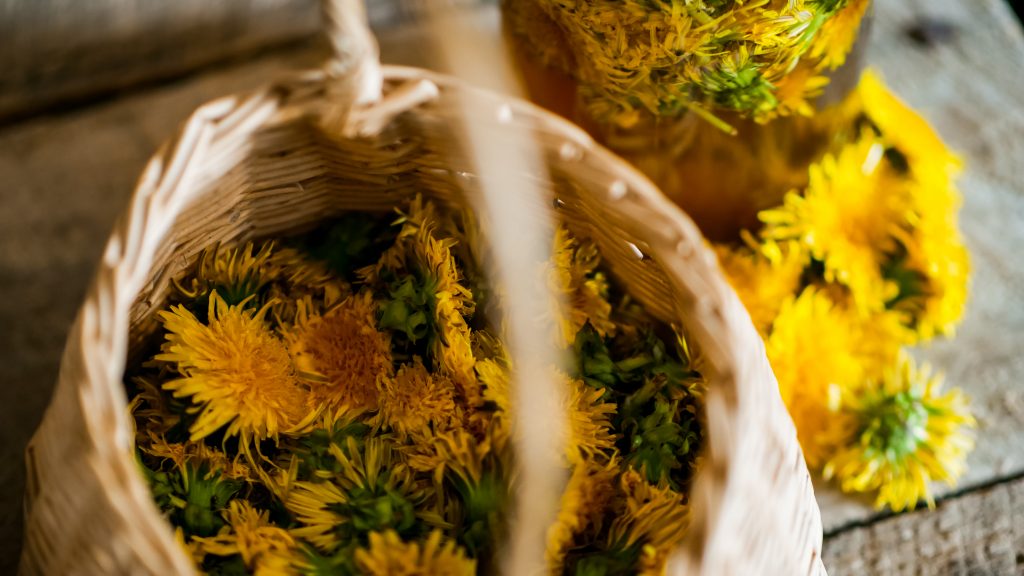
Rhubarb Shrub Recipe and Companion Plants
The Mighty Plant: Rhubarb!
Just say the word Rhubarb, and childhood memories come flooding back! My sister and I barefoot in the garden on a sunny morning, with a tin cup of sugar, picking just the right piece of rhubarb for our tasty spring treat. Ah that first bite, crunch! Oh so tart! then dip, and oh, so sweet! We waited all year for these special garden moments
Rhubarb is most often thought of as a vibrant fruit because of its sweet, tart taste, and is often found in home baking, such as a rhubarb pie, but did you know that it’s actually a vegetable? Cross my heart! Come to think of it, there is a strong resemblance to celery. While technically it is a vegetable, legally it’s considered a fruit due to a 1947 court ruling in America. Interesting eh?
Rhubarb, part of the Polygonaceae family of plants (perennial), is a unique looking plant with a remarkably interesting history. The rhubarb plant was originally used in many forms of traditional medicine, first showing up in Europe over 400 years ago. It’s fascinating to share that there are records showing rhubarb among the medicines traded along the Silk Road. Scientifically, it is an herbaceous perennial with leaves growing off the top of a thick rhizome. The leaf stalks and seeds are the only parts of the plant consumed. The heart-shaped, wide-veined leaves contain oxalic acid, which can be toxic when consumed in large quantities, so discard them before you use or store the stalks. As a gardener I love the beautiful addition rhubarb offers the landscape thanks to these large leaves and colourful stalks.
Harvesting
Rhubarb season runs from April through June. When harvesting, the stalks are carefully pulled or cut from the rhizome, and the toxic leaves are removed right away. Plants can generally be harvested for a four-week period in the third year and for around eight to 10 weeks in subsequent years.
How to Freeze Rhubarb? Simply pick and chop off the leaves, wash and pat dry the stalks. Chop into small even pieces. Put in a freezer bag and empty it of all the air (I measure 4 cup amounts because this is how much we need to bake a 9 inch pie). Put in a freezer and use throughout the year. Make sure to thaw and drain the frozen rhubarb before using it!
So, What is a “Shrub” Anyway?
It sounds all fancy dancy, but a Shrub is a super easy way of preserving fruit. Before we had refrigerators, our grandmothers were using many ways to preserve nature’s bounty. Canning, curing, smoking and dehydrating (which all sound very familiar) , but shrubs – also known as drinking vinegar – might be something new to you. A shrub is just a simple fruit syrup fortified with vinegar instead of water for preserving the essence and flavour of the plants being used. The vinegar continues to work with the sugars, and over time, creates a twist … mellowing and melding into a wonderful concoction. The tangy rhubarb shrub can be added to water, mineral water, sodas, or spirits for a refreshing tart drink. I also like to add a kick of ginger or some heavenly mint from the garden! Be inventive; try adding a splash of fruit juice, herb and spices to make a new drink each time.
Shrubs were popular during 1600s, 1700s and 1800s and has been making a come back for some time. Now appearing in specialty shops being used most commonly in craft cocktails, or mocktails. I LOVE the saying, “everything old is new again”. Ain’t that the truth!
This traditional treat is welcomed on a hot summer day or makes a lovely gift!
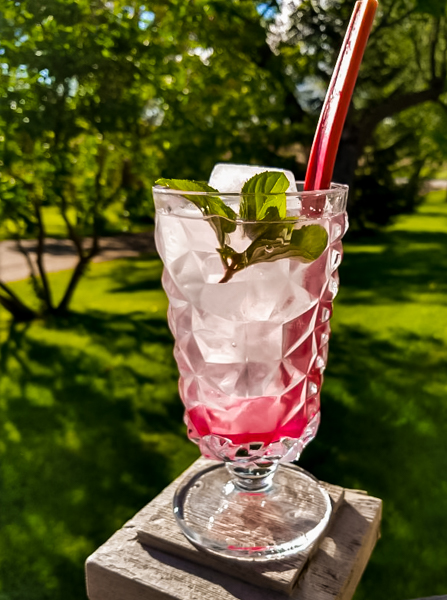
My Mom’s Rhubarb Shrub Recipe
Ingredients:

- 6 cups of freshly picked Rhubarb
- 1 ½ tsp dried ginger (optional)
- ¾ cup apple cider vinegar (can also use white or red wine vinegar or water)
- 3 hand sized pieces of Sweet Cicely leaf
- ¾ cup sugar (if not using Sweet Cicely, sugar should be 1 ¼ cups)
Directions
Wash rhubarb and sweet cicely. Combine chopped rhubarb, sweet cicely, sugar, ginger, and vinegar in a medium saucepan. Cover and bring to a boil over medium-high heat. Once boiling reduce heat to low. Cook, stirring occasionally, until rhubarb is completely broken down and strands are visible, 15 minutes.
Use a fine mesh sieve or colander lined with cheese cloth and strain mixture into a glass container. Let cool and then chill.
Voila! Shrub is ready to use.
For a refreshing drink simply add 1/8th cup (1 oz) of shrub to the bottom of a tall glass, fill with ice and top with water or sparkling water. Top with a mint leaf and small stalk of rhubarb. Optional: add a splash of juice, vodka, gin, gin smash or Tom Collins.
** Note: Any left over rhubarb can be frozen for later use. I always pick extra and bag up 4 cups of cut rhubarb with a leaf of sweet cicely for baking a pie or crisp when rhubarb is out of season.
Companion Plant Pairings for Your Garden: Rhubarb and Sweet Cicely
Plants grow better with a little help from their friends. The practice of planting different varieties of plants together is known as companion planting and can help ensure a healthy harvest of both crops. Rhubarb and Sweet Cicely are a perfect pair. They have been growing harmoniously side by side in my old vegetable garden for years. But the best part is they are ready at the same time! They are a delight to any gardener who loves Rhubarb but does not want a ton of sugary desserts. Sweet Cicely helps you to cut the amount of sugar in any given recipe by almost half. AMAZING!
Other kitchen pairings:
Sweet shrubs: strawberries or blackberries with mint, sweet cicely seeds with pineapple, or peaches with basil.
Savory shrubs: tomato shrub infused with chilies and cilantro, cucumber with fresh ginger, or celery and caraway seeds.
Medicinal Information
Sweet Cicely
- Aromatic, stomachic, carminative and expectorant. Possible diuretic
- Useful in coughs and pleurisy
- Gentle stimulant for debilitated stomachs. Useful in flatulence
- The fresh root may be eaten freely or used in infusion with brandy or water. A valuable tonic for girls from 15 to 18 years of age
- The roots are antiseptic, and a decoction is used for bites of all kinds through bugs to animal
- The essence to be aphrodisiac
- The decoction of roots in alcohol is also said to be effective for consumption
- Ointment made eases the pain of gout
Rhurbarb
- Eases digestion: the fiber in rhubarb promotes a healthy and normal digestion process and eases abdominal discomfort such as bloating and cramping
- Bone health: the vitamin k, combined with the rich amount of calcium and other minerals found in rhubarb, promote bone protection and strengthening. The high amounts of vitamin K also promotes osteotropic activity, meaning that it stimulates bone growth and repair
- Brain health: protecting the brain from neurological damage and disorders, such as Alzheimer’s
- Antioxidant: fights free radicals and keeps inflammation in check
- Relieves constipation and diarrhea: as it eases digestion, it can also relieve constipation and diarrhea
- Lowers Inflammation: the antiviral effects of rhubarb also help inhibit inflammation, making it an effective anti-inflammatory
- Aides Perimenopause and Menopause symptoms such as hot flashes.
- Menstrual cramps
- Nutrient: containing calcium, vitamin K, A and C, potassium and manganese.
- Weight loss: rhubarb is very low in calories and the high fiber content helps you feel full faster
- Heart Diseases: the high fiber content is extremely useful in lowering cholesterol levels
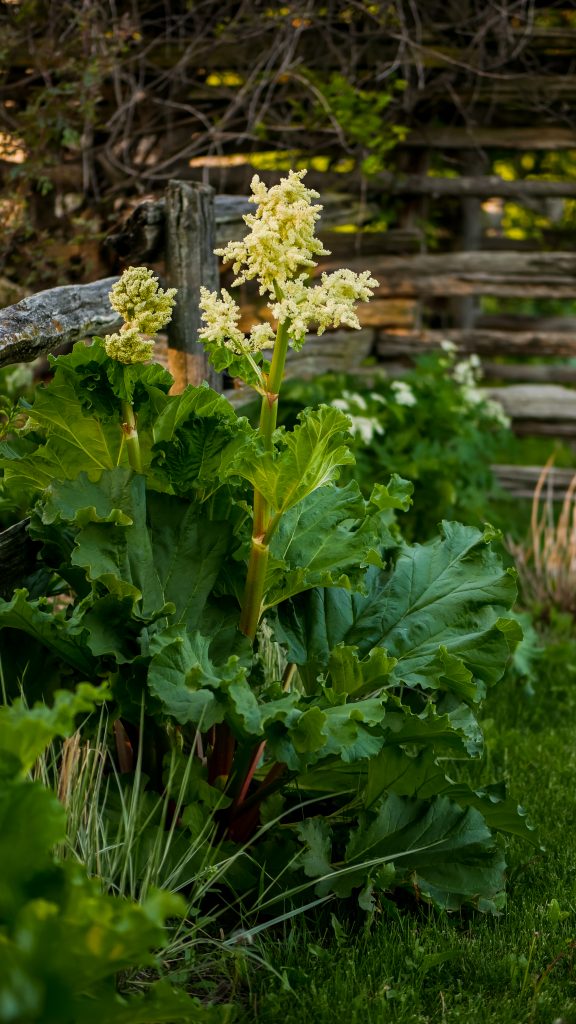
Herbal Actions: Demulcents
What is a “herbal action”?
When we speak about the action(s) of a certain plant, we are referring to one or more effects a plant can have on our body. Often these actions are explained in two or three words; however, herbal actions are so much more than that! Since plants are wonderful complex beings, they also have several actions. Most herbs can compliment their action(s) in combination with another herb, basically showing off their best side with the support of a “good friend”. Sometimes they work great on their own, but most of the times, they excel with a good buddy on their side. Think- Teamwork!
Demulcents
Let’s have a talk about our “Gentle Healers”. Not only are demulcent herbs soothing and gentle, but they also tend to be very nutritive. They are gently supporting and helping us to heal. A group of herbs you simply have to love…
Demulcent herbs are rich in carbohydrate mucilage, which is composed of heteropolysaccharides (various forms of sugars). These posses the ability to bind themselves to water, which will then turn viscous/gel like and stick to the surface of the plant material. Have you ever made yourself a pot of chia pudding? You may have noticed how the dried seeds swell up after a few minutes of being exposed to water (both warm or cold). They can build what seems like a soft cocoon of viscous mucilage around them. A leaf of common mallow will also easily demonstrate this effect – notice how after a few times chewing your saliva turns viscous and gel-like?
Did you know that some plants like to use this feature of the mucilaginous, “slimy cocoon” to spread their seeds? When ingested by animals, the protective coat often helps prevent the eaten seeds from being digested. You can guess what happens next… The animals defecate the coated seeds and give them a little boost with their very own fertilizer. Fascinating!!
Generally Speaking, Demulcents are Indicated in:
- Dry, tight tissues
- Inflammation with dried out mucous secretion
- To cool, coat and soothe
- To stimulate peristalsis in constipation
- As binder in cases of diarrhea
- Soothe stomach and esophageal tissue from acid burn
- Prevent ulceration
- Irritations in the urinary tract
- As lubrication and skin emollient
The energetics of demulcents are fairly straight forward; they are generally moist and tend to be cooling. Due to the polysaccharides, they tend to have a sweet taste. We also have to remember that the energetics of a herbal action are more of a guideline. Considering the individual herb to more properly “classify” its energetics is the right path to go.
Examples of Some Demulcent Plants
Demulcents for the digestive tract:
Althea officinalis (Marshmallow), Plantago scarba (Psyllium husk) or Linium usitatissimum (Flax seeds). Demulcent herbs have to ability to lay a protective coat over mucous membranes and other tissue it comes in contact with. Therefore, demulcents used in the digestive tract have the ideal conditions to show of their best side.
Demulcents for the respiratory tract:
Verbascum Thapsus (Mullein), Tussilago farfara (Coltsfoot), Althea officinalis (Marshmallow). By providing a protective coat over the inflamed airways, demulcents soothe and function as analgesics, anti-inflammatory and as protective layer over the mucous membranes.
Emollient herbs for the skin:
Linium usitatissimum (Flax seeds), Symphytum officinale (Comfrey), Althea officinalis (Marshmallow). Many herbalists refer to mucilage internally used as demulcents and topically used as emollients. Emollients help provide flexibility to dry, irritated and inflamed skin conditions. Often times, applying the herb in form of a poultice seems to work very effectively.
Demulcents for irritation in the urinary tract:
Elymus repens (Couch grass), Zea mays (Conrsilk) and Althea officinalis (Marshmallow) are all excellent demulcents for any irritation, burning, and other irritable sensations in the urinary tract and have been used very successfully over many generations. Diuretics working on solid material work best with the assistance of lubricating demulcents.
Preparing a Cup of Tea
Traditionally, most demulcents are prepared via cold infusions. The reason behind this is that we are focusing to mainly extract the mucilaginous polysaccharides – our gentle healers… If you are preparing milder or more complex demulcents, you might be looking at a hot infusion.
A very effective way is to infuse 1-2 tbsp of dried herb into 1 liter of cold water. Let this sit overnight. In the morning, you have a wonderful soothing infusion. You could also just let it sit for a few hours, but the longer the herb infuses, the more viscous the tea will get.
Especially on hot and dry days, you might want to consider adding some Althea officinalis root to your water; it will help you stay better hydrated and tastes super yummy!
I hope this post gave you a little insight on demulcent herbs and how they can interact with our body. This topic is covered much more in depth in the herbal course, which is currently developed and coming soon by our group of wonderful herbalists.
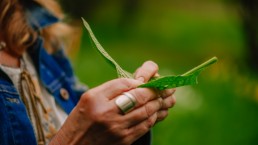
Comfrey Leaf (Symphytum officinale)
Resources:
Besides my own words and oral teachings from many wonderful herbalists, this write up features’ information from the following resources:
Ursel Buehring Praxis- Lehrbuch Heilpflanzenkunde – Grundlagen – Anwendung – Therapie. 4 ueberarbeitete Auflage. Karl F. Haug Verlag in MVS Medizinverlage Stuttgart GmbH & Co. KG’ 70469 Stuttgart, Germany. 2014. (Published in German language)
Jim McDonald – Foundational Herbcraft – www.herbcradft.org – collected writings from www.PlantHealkerMagazine.com.
David Hoffmann – Medicinal Herbalism: The science and practice of herbal medicine. Healing Art Press, Rochester, Vermont 05767. 2003.
Abrah Arneson – The Herbal Apprentice: Plant Medicine and the Human Being – Green Heart Press. 2014.
Matthew Wood – The practice of Traditional Western Herbalism – Basic Doctrine, Energetics and Classification – North Atlantic Books, Berkley, California. 2004.
Rosemary Gladstar –Rosemary Gladstar’s Herbal Recipes For Vibrant Health: 175 Teas,…- Storey Publishing, LLC – September 3, 2008
A Herbal Apprentice's Journey: Arrival
April, 2021.
Sprinkled across the hood of my car were a cup of tea, a handful of bolts, and a borrowed socket set. I was hanging off of the roof rack with one hand and eating a sandwich with the other. I told my roommates that I would catch up with them. I needed to finish installing this bike rack. I smiled to watch them glide down the road on their bicycles. A few minutes later, I had tidied up and I was pedaling to meet them at the ocean to catch the sunset. It was already beginning. The sun rays fanning low through the streets, dancing on rooftops, cartwheeling through branches. The city of Victoria has many neighborhoods lined with cherry trees that had erupted into clouds of blossoms. Riding down to the water in a world swaddled in roses, perfumed with the springtime sweetness of cherry blossom air. This is how I remember leaving the west coast. The following morning, we walked along the beach once more to splash saltwater on our faces and say farewell to The Pacific. I got into my car with two of my roommates carpooling east with me.

The railway follows alongside your car on the Trans-Canada, similar to the way the moon chases you through the highways in the night. She is unwavering no matter the direction you take. It’s as if the world is made for you at that very moment. A drive through The Rockies or along Lake Superior. They are friends that choose to stay with you for a while just to keep you company. Road trips have this sort of romantic longing that I’m beginning to discover has less to do with gas station coffee and more to do with the time you spend making eye contact with the spirits of the country.
I was in the back seat looking down the side of the mountain to the running river below, listening to a lesson by Evolutionary Herbalism about herbal astrology. As a hands-on, big-picture learner, I love learning to link planets, bodies, and plants. I’m able to embody what I am learning if I can reflect on the connections of all things. In our initial zoom conversation, Nick had mentioned using astrology for planting and harvesting herbs. I’ve been interested in biodynamic farming for that very reason. I spent the afternoon daydreaming through the Rockies about how much there is to explore in an extensive apprenticeship like this one. It’s exciting and overwhelming to think of how much I don’t know yet. Though it is comforting to know I have gentle and wise mentors welcoming me, and I feel excited about how they will take to my questions very soon.

I arrived in Ontario one day into Aries season, the energetic new year. As I type this, my eyes linger over my journal still half-filled with reflections from the full moon that has recently passed. I’ve taken some time to read over the first lesson on the course that accompanies my apprenticeship; The Science and Art of Herbalism, by Rosemary Gladstar. The homework assigned in the first lesson requires the student to produce two different infusions and two different decoctions. On the full moon, I knew that I would soon menstruate. I thought it to be a perfect time for a lunar infusion. I used a blend of raspberry leaf, nettles, pineapple mint, motherwort, mugwort, and calendula in a glass jar, filled with fresh room temperature water. The jar sat on my windowsill in the moonlight, for me to drink when I woke the next morning.
I have used herbs, and specifically, cold water infusions, to support my menstrual cycle for many years. I bleed heavily and I have intense cramps. Both of which I find easy to use herbs for. Only in the last year have I noticed my emotions fluctuating with my cycle. I have been experimenting to find what is best for me to support clarity of mind and regulate hormones. The lunar infusion that I tried for my homework felt great. My body feels nourished with vitamins and minerals. The soft encouragement of the moon draws out such a sweetness in the herbs that brings a gentle energy to my body when I drink this type of infusion. It is by far one of my favourites!
I have gathered notebooks that will soon become a broad reference library of notes and wonders. Thank you for joining me on this journey! These spring days stretch out before us, welcoming the annual great-reveal of life! Happy spring to you, I’m looking forward to writing to you again.

Blog photos provided by Dayna

